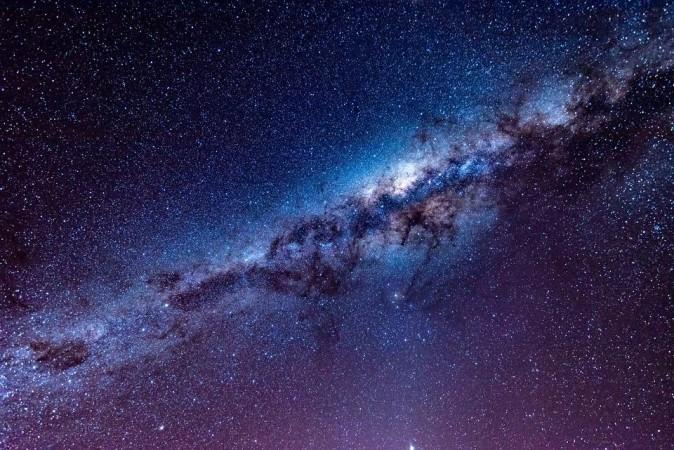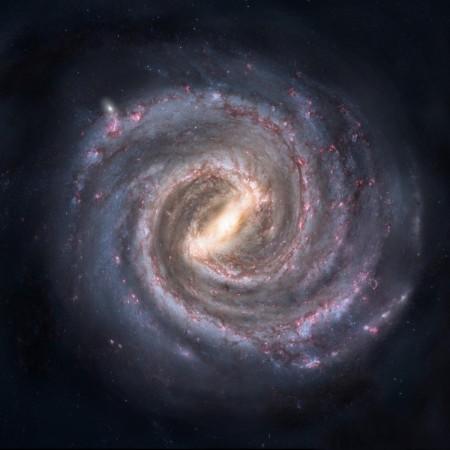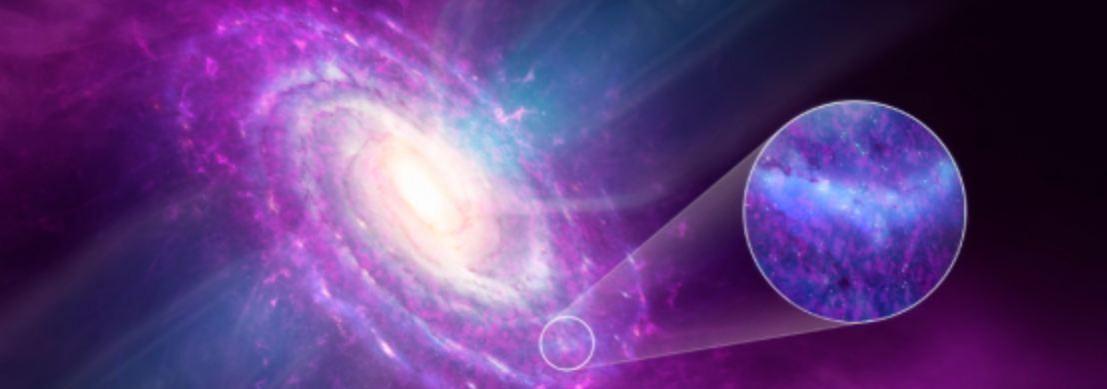It has been widely accepted that the Milky Way is a homogeneous combination of all the components that form it. Existing theoretical models consider the same as well. However, a new study has challenged this understanding. According to a multi-institutional study, our galaxy is not as homogeneous as it was previously assumed.
Published in the journal Nature, the research stated that gases within the Milky Way are not mixed homogenously, and only very few regions achieve solar metallicity. "This discovery plays a key role in the design of theoretical models on the formation and evolution of galaxies. From now on, we will have to refine the simulations by increasing the resolution, so that we can include these changes in metallicity at different locations in the Milky Way," said Dr. Jens-Kristian Krogager, co-author of the study, said in a statement.
Formation of Galaxies

Galaxies are composed of clusters of stars and created by the condensation of gas that is present within the intergalactic medium (comprising largely helium and a small quantity of helium. Unlike the gas in the galaxy, this gas possesses no metals. Within astronomy, any chemical element that is heavier than helium is considered a 'metal'. However, they are nothing by atoms in a gaseous state. "Galaxies are fuelled by 'virgin' gas that falls in from the outside, which rejuvenates them and allows new stars to form," explained Dr. Annalisa De Cia, first author of the study.
However, concurrently, stars utilize hydrogen that makes them throughout the course of their lives. During this, they form other elements through a process called nucleosynthesis. At the end of a star's life, it explodes. And in the process, it discharges the metals it has produced such as carbon, iron, silicon, and zinc. This feeds the elements into the gas that is present in the galaxy. The expelled atoms can eventually condense to form dust, particularly in the denser and colder sections of the galaxy.
"Initially, when the Milky Way was formed, more than 10 billion years ago, it had no metals. Then the stars gradually enriched the environment with the metals they produced", added Dr. De Cia. When the levels of metals present in the gas equal that present in our Sun, astronomers turn to Solar metallicity (chemical enrichment similar to the Sun's atmosphere).
Constituents of the Milky Way

Astronomers probe the composition of metals and gases that constitute an integral part of the Milky Way in order to comprehend the evolution and history of our galaxy. Three key elements are paramount—the initial gas emerging from outside our galaxy, the gas (that also contains chemical elements) in between the stars within the galaxy, and the dust that is produced by the condensation of metals that the gases contain.
So far, all theoretical models considered these three components were mixed homogeneously across the Milky Way, and that reached levels of Solar metallicity. "Until now, theoretical models considered that these three elements were homogeneously mixed and reached the Solar composition everywhere in our galaxy, with a slight increase in metallicity in the centre, where the stars are more numerous," illustrated Dr. Patrick Petitjean, co-author of the study.
Employing an Ultraviolet spectrograph aboard the Hubble Space Telescope, the scientists aimed to examine this aspect comprehensively. Acting as a prism in a few ways, spectroscopy permits the separation of light from stars into their individual frequencies or colors. Researchers are specifically inclined towards absorption lines in the decomposed.

"When we observe a star, the metals that make up the gas between the star and ourselves absorb a very small part of the light in a characteristic way, at a specific frequency, which allows us not only to identify their presence, but also to say which metal it is, and how abundant it is," elucidated Dr. Petitjean.
Challenging Existing Models
As a part of the study, the team investigated the 25 stars using Hubble and the Very Large Telescope (VLT) located in Chile. However, they were presented with a fundamental challenge. Despite containing metals, it is not possible to count dust utilizing these spectrographs. Thus, the astronomers designed a novel observational method.

"It involves taking into account the total composition of the gas and dust by simultaneously observing several elements such as iron, zinc, titanium, silicon, and oxygen. Then we can trace the quantity of metals present in the dust and add it to that already quantified by the previous observations to get the total," described Dr. De Cia.
Owing to this double observation method, the team learnt that the environment of the Milky Way is non-homogeneous. They also found that certain areas explored achieve only 10 percent of the solar metallicity. According to the authors, the findings of the study can impact our understanding of the Milky Way's evolution, and that of other galaxies as well. Also, the learnings highlight that metals play a critical role in the formation of entities such as cosmic dust, molecules, planets, and stars.

















